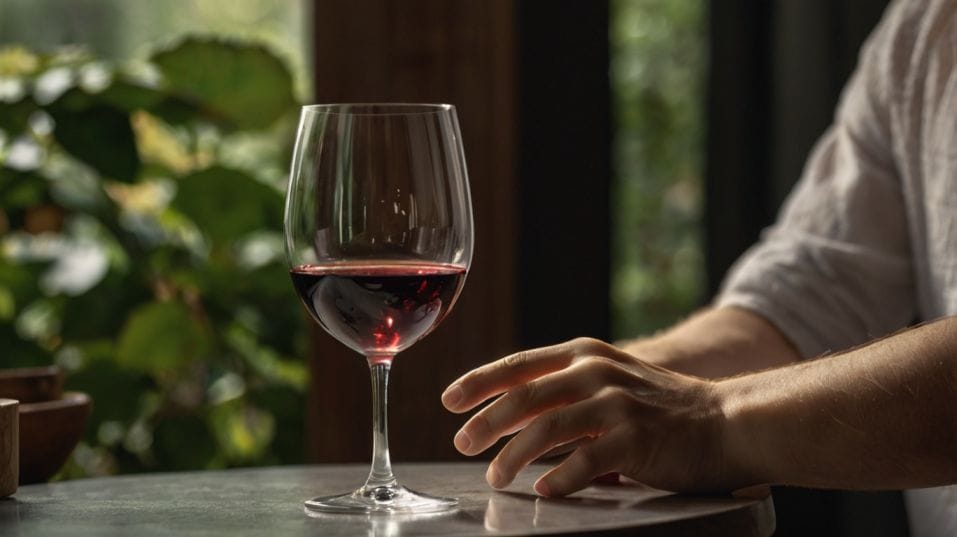The Right Way to Hold a Wine Glass (And Why It Matters)
Want to taste wine better instantly? Learn how to hold a wine glass the right way—and why it changes everything from aroma to flavor.

Ever wonder if the way you hold a wine glass could change the way wine tastes? For curious beginners, it’s one of the fastest ways to sharpen your senses and drink with more confidence.
This isn’t about looking refined—it’s about unlocking the wine’s full story. From preserving temperature to enhancing aroma, your grip shapes the entire experience.
Once you master it, every glass becomes clearer, more expressive, and a lot more satisfying.
Holding Wine by the Stem: Function Over Formality
Let’s clear one thing up: holding the stem of a wine glass isn’t just about looking refined. That’s a side benefit, not the point. The real reason is practical—physics, biology, and flavor all intersect here.
Your hands radiate heat. If you cradle the bowl of the glass, your body temperature warms the wine, often faster than you realize. That can dull acidity, blur structure, and flatten delicate notes.
This is especially noticeable with white wines, rosés, sparkling wines, and lighter reds—all of which show best at cooler temperatures. Even a subtle shift of a few degrees can throw off balance or mask freshness.
By holding the stem, you allow the wine to stay at the temperature it was meant to be served. That preserves integrity and gives you a truer sense of the winemaker’s intention.

Aroma First, Always
Wine is aroma-driven. Flavor is only part of the story—the rest lives in your nose. What you smell sets the stage for what you taste, and your grip affects that too.
Gripping the bowl crowds the space around the rim of the glass, blocking the natural rise of aromatics.
You also bring your hand and any surrounding scents—soap, lotion, food—into the immediate sensory zone. That dilutes what the wine is trying to express. Holding the stem leaves the bowl open and unobstructed.
You can bring the glass directly beneath your nose without interruption, letting the aromas concentrate and unfold. It’s a cleaner, more direct experience—and it teaches your palate how to listen before it decides.
Swirling, Seeing, Sensing
You’ve probably noticed that wine professionals swirl their glasses—not for flair, but to open up the wine.
That swirling motion mixes oxygen into the wine’s surface, encouraging more volatile aroma compounds to lift into the glass. But try swirling a glass by the bowl and you’ll find it clumsy and off-balance.
Holding the stem gives you leverage. A simple rotation at the base of the stem sets the wine in motion with minimal effort and maximum control.
And once it’s swirling, you can better observe the wine’s color, viscosity (“legs”), and clarity—all of which offer useful clues about age, alcohol level, and body.
This kind of physical fluency—the way your hand, eyes, nose, and mouth work together—adds up to a more complete tasting experience. You're not just sipping; you're investigating, decoding, and responding.
Slowing Down the Pour
There’s something subtle and powerful about how holding the stem slows you down. It signals attention. You’re no longer drinking on autopilot or chasing a buzz. You’re tasting with intent.
That kind of presence changes everything. You notice how the wine evolves in the glass, minute by minute. How the temperature subtly shifts.
How a shy aroma becomes bolder, or how the finish lingers longer than expected. Holding the glass the right way encourages that level of curiosity—it builds your instincts and sharpens your memory for wine.
And as your technique becomes second nature, so does your confidence. You don’t need to overthink or overexplain. You simply know what you’re doing, and it shows.
The Universal Gesture
Whether you’re drinking a structured Barolo, a chilled Grüner Veltliner, or a skin-contact white with some texture and funk, the fundamentals stay the same. The right way to hold a wine glass works across styles, regions, and rituals.
It also works across moments. At a tasting. At home. At a dinner party. Around a firepit. With friends who care deeply about wine—or not at all.
Holding the glass properly doesn’t make you pretentious. It makes you tuned in. You’re not performing. You’re participating.
This single, elegant gesture creates space—for the wine, for your senses, and for the experience to unfold without interference.
Final Thoughts
Holding your wine glass by the stem isn’t about looking like you know what you’re doing—it’s about actually knowing.
It protects the wine’s temperature, frees its aromas, and elevates how you see, swirl, and taste. Once you commit to the technique, it becomes effortless. And every glass that follows becomes clearer, truer, and more satisfying.
Tonight, pour a wine you’ve been meaning to revisit. Hold the glass by the stem. Give it a swirl. Breathe in deeply. Pay attention.
Let this small, deliberate choice become part of your tasting rhythm—and see how much more the wine gives you in return.




